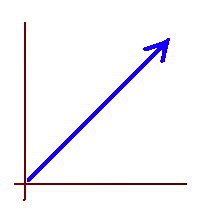A Method and an Analogy to Clarify this Topic
During the last few weeks I came up with a way to explain how to calculate the lowest common multiple (LCM) of two or more integers or two or more polynomials.
Many students get confused by this LCM topic. One reason is the simplicity of the fact that, for any two expressions, their product is a common multiple, so, “Why look any further?” many students ask themselves.
They know their teacher told them in general the product is not the lowest common multiple of two expressions, so they know they are going to get marked down if they give that answer, but many do not know how to find the LCM.
Recently I improved my success rate at explaining how to find the LCM when I started using a table format, as follows.
In the head row I write the two or three polynomials or integers for which we are looking their LCM.
On the left margin I make a list (going down) of all prime factors of the expressions involved, without any repetition. Common factors get listed just once regardless of how many expressions they appear in.
Then, having one row per factor, and one column per expression, we fill in the table by writing the exponent each factor appears raised to in each expression, carefully including all exponents (even those with value zero or one).
After all exponents are listed in the table we make another column at the far right, under the heading “Maximum.” There we write the biggest number out of each row.
The next step is to form the LCM as the product of all individual factors listed in the table (in the leftmost column), each raised to its maximum exponent, as listed in the rightmost column (under “Maximum”). This last product is the LCM we were looking for.
Of course this process can be done without the table, but the table makes it explicit, and it helps as a visual aid for the student to see everything that is going on, all at once. It also helps in making very clear that we do not add the exponents, nor do any other operation with them, we only identify and select the biggest one for each factor.
Most students are happy with this process; the table is good enough for them. It gives them a clear method to follow, and it takes away the guessing and the mystery they formerly faced when trying to calculate the LCM. One of them even said: “You just saved my life with that table! Now I know how to do it!”
However, there are always a few students who also want to know why the procedure works, not only how to do it.
For those who ask “Why?” after seeing the table, I have this explanation ready:
“We have to imagine we are watching a movie about spies and intelligence agents, O.K.? Each expression is like a security checkpoint, where our agent has to show the proper clearances to get pass that point. The checkpoints have different sets of requirements. Each requires verification of a certain level of authority for each security category they are checking at that point. The factors of the expressions are the security categories, like “radioactive material,” “fire arms,” “chemical hazards,” and so on. The exponents are the different levels of clearance agents may have in each category. So when determining the LCM we are looking for the bare minimum possible set of clearance levels we need to give an agent for him or her to be able to make it through all the checkpoints, without any extra, unnecessary authority. They don’t lose their credentials when they go through a checkpoint. They only need to show their badges, they do not give them up. That is why we do not need to add exponents; we only need to select the highest from all the expressions for that particular factor.”
I have found this explanation works very well with all students with whom I have used it so far. One of them said: “Oh! I see. The x2 from 3x2y is already included in the x3 from 5x3(x+1) because the exponent 3 is higher than 2. We do not need x5 or x6. Just x3 will be enough.” And I said: “That is exactly how it works!”
Quantum Interference Loss via Path Encoding and Recovery by Quantum Erasure
-
If we regard interference and entanglement as the most distinctive features
of the quantum world, then “which-way” experiments lie at the heart of
quantum ...
1 day ago





No comments:
Post a Comment